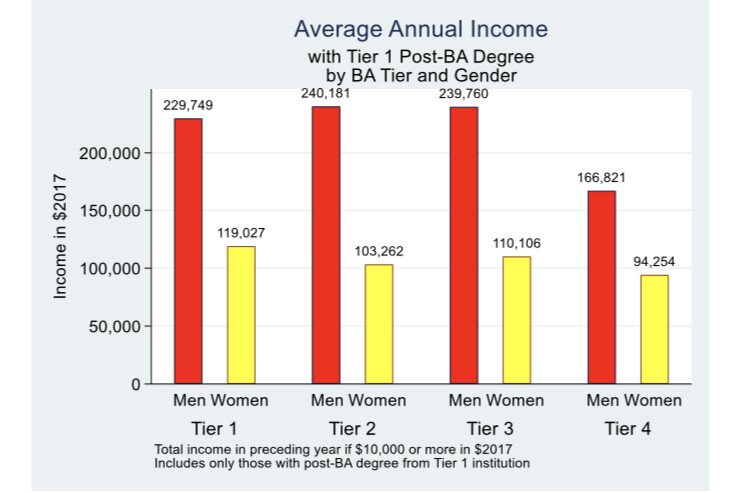It’s good to read the paper and draw conclusions, rather than take isolated quotes. The paper divides colleges in to selective and non-selective tiers. The definitions of selective/“elite”/“prestigious” are different than the ones used elsewhere in this thread. Some examples are below. Some of the selective colleges in tiers 1-3 have >90% acceptance rate. Others have <10% acceptance rate.
Selective Colleges
Tier 1 = Selective Privates. Examples include St. Louis U, GWU, BYU, Miami, and Howard
Tier 2 = Selective LACs. Examples include Agnes Scott, Alibion, Albright, and Allegheny
Tier 3 = Selective Publics. Examples include Arizona State, Florida State, and Iowa State
Not Selective Colleges
Tier 4 = Anything no listed in tier 1-3
The paper compares earnings among students who received a post graduate degree from tier 1-3 college, and tries to isolate whether it depends on the student attending a selective tier 1-3 undergrad college vs non-selective tier 4 undergrad college.
The author found that with no control for things like college major, professional degree, and employment characteristics that there was a difference in earnings. Kids who attended tier 1-3 for undergrad had higher earnings that tier 4.
After controlling for college major, professional degree, and parents education, the difference generally remained significant. I say “generally” because there was not a significant difference between tier 2 (LACs) and non-selective in some cases.
After controlling for employment characteristics including things like field of work (for example government vs finance), the difference between tier 3 (publics) and non-selective also was not statistically significant in some cases. However, tier 1 (non-LAC privates) still remained significant. Some specific regression coefficients for males attending a tier 1-3 for graduate with all the discussed controls are below:
BA at Tier 1 (privates): +0.13 (0.01) – Significant at 1% level
BA at Tier 2 (LACs): +0.02 (0.01) – Not significantly different from 0
BA at Tier 3 (publics): +0.01 (0.01) – Not significantly different from 0
BA at Tier 4 (non-selective): 0.00 – Reference for comparison
Other variables that were significant at 1% level in earnings include
- Not being Black or non-US citizen
- Father having professional degree
- Mother having any college degree (higher degree level the better)
- Studying tech or econ/business
- Working for a larger size company (the bigger the better)
It’s unclear to me exactly why attending a selective non-LAC private was associated with a higher earnings after controls than attending a selective LAC or public. As noted, the “selective” definitions are questionable to say the least, which may contribute. However, I suspect the bigger issue is missing key controls. A key one that is missing is a measure of quality of student, such as test scores or GPA. It might be a relationship like the “tier 1” kids have a higher concentration of academically stellar students than the other tiers, with better stats and such. And the academically stellar students tend to have higher earnings on average.
